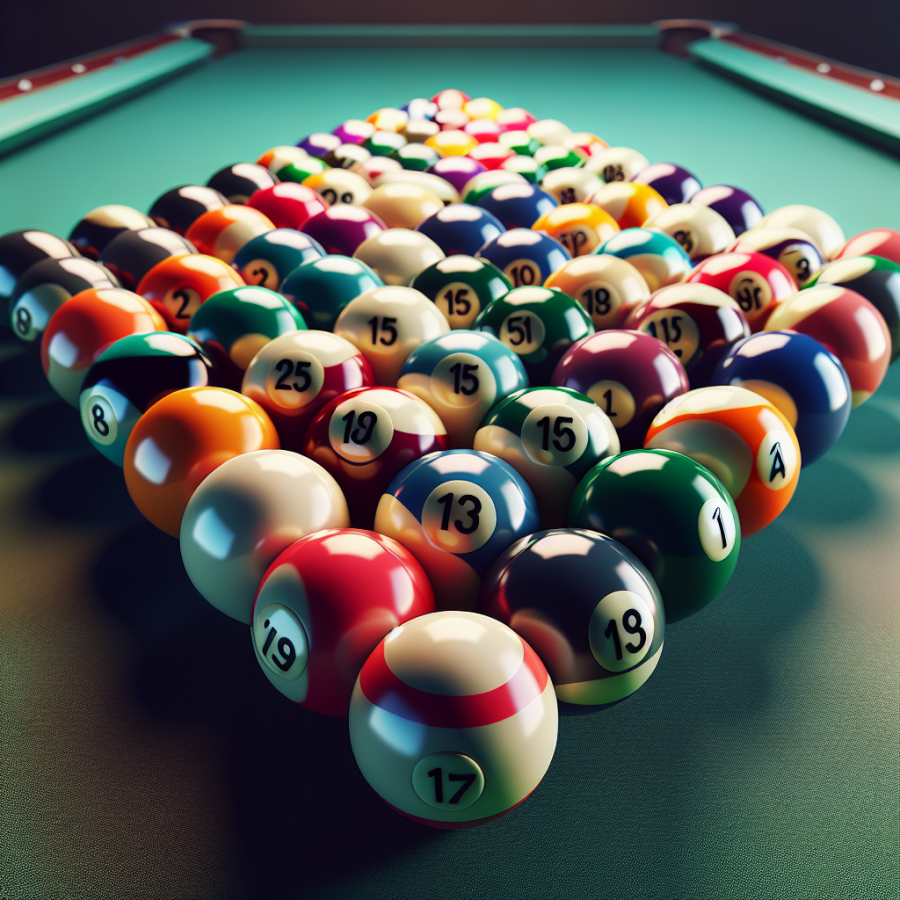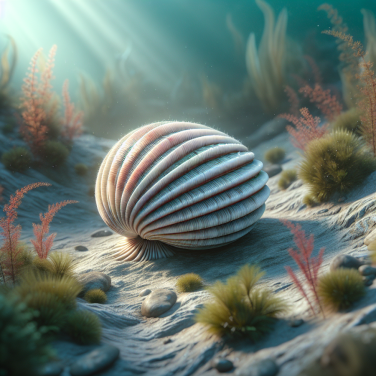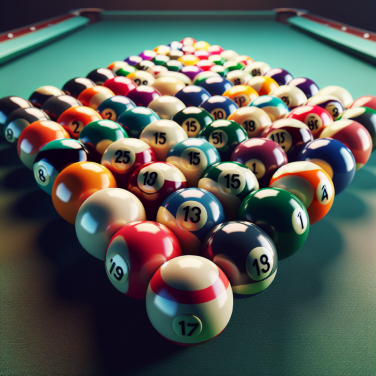The Technological Transformation of Pool Balls: Embracing Synthetics and Sustainability
As the game of billiards has evolved, so have the materials and technology used to create pool balls. For centuries, the standard for pool balls was ivory, harvested from the tusks of elephants. This practice, not only unsustainable but incredibly harmful to elephant populations, led to the development of synthetic alternatives that could meet the demands of both players and the environment.
The technological transformation of pool balls began in the mid-19th century with the invention of synthetic materials that could mimic the favorable characteristics of ivory. The first notable alternative was Phelan and Collender's invention of "compo" or "composition" balls, which were made from an undisclosed mixture of materials. However, it wasn't until John Wesley Hyatt invented celluloid, the first practical synthetic plastic, that the modern era of pool balls truly began. Despite celluloid being highly flammable, its use marked a significant shift away from natural ivory and towards synthetic materials in the manufacture of pool balls.
Over the years, various synthetic materials have been used to create pool balls, with each generation improving upon the last. The introduction of crystallite in the early 20th century, for example, was a short-lived experiment due to the material's tendency to shatter violently. It was then that phenolic resin came to the forefront, a material that is still widely used today in high-quality pool ball sets due to its durability, balanced weight, and ability to be polished to a high sheen.
Phenolic resin, often branded as Aramith, has dominated the industry thanks to its superior playing characteristics. These balls have an elasticity that closely resembles that of ivory, ensuring the kinetic energy from the cue ball is efficiently transferred to the object balls. Phenolic resin balls also have a high resistance to scratches, chips, and fading, ensuring a long lifespan even with heavy use.
In the continued quest for sustainability, newer materials and manufacturing processes are being explored. Recent advancements have seen a focus on using recycled materials and improving the ecological footprint of pool ball production. Some companies are developing new composites that aim to reduce the use of petrochemicals in the resin, making the balls more environmentally friendly while still maintaining the quality of play.
One of the latest innovations in this field is the creation of pool ball sets made from biodegradable materials. These balls seek to provide a green alternative to the traditional phenolic resin without compromising on performance.
Read also:
Conquering the Waves: A Guide to Standup Paddleboarding
Tracing the Ancestry of Billiards: The Journey from Ivory to Acrylics
The game of billiards, rich in history, has seen a vast transformation in the materials and technology used to create its most pivotal equipment: the billiard balls. The ancestry of billillards can be traced back to the 15th century, where the earliest balls were crudely fashioned from wood, a material easily sourced and shaped but lacking in durability and uniformity. As the game gained popularity among the European elite, the desire for a more sophisticated and consistent playing experience led to the use of ivory, harvested from the tusks of elephants.
Ivory represented the pinnacle of billiard technology for centuries. Each set of balls required the selection of the highest quality tusks, and the process of shaping and polishing was an art in itself. The sheer costliness and skill required to produce ivory billiard balls elevated them to luxurious items, a status symbol among the wealthy. However, this practice was not without its flaws. The use of ivory raised serious ethical concerns due to the harm it caused to elephant populations, driving them closer to the brink of extinction.
Furthermore, ivory, while beautiful and smooth, was not an ideal material. Its susceptibility to cracking, warping, and inconsistencies in density caused variations in play. Recognizing these limitations, inventors and manufacturers began the search for alternative materials, initiating the transformation from organic to synthetic productions.
The first significant step away from ivory was the development of celluloid, the first semi-synthetic plastic, in the late 19th century. Celluloid balls were a marked improvement and heralded the beginning of mass production in billiard ball manufacturing. However, celluloid was highly flammable and could even explode upon impact, making it a less than ideal solution.
This led to further experimentation and the eventual adoption of phenolic resins in the 20th century, which offered the necessary durability, uniformity, and non-flammability. Composed of formaldehyde and phenol, these resins could be reliably manufactured to produce balls with consistent weight, resilience, and bounce—essential for precise and fair play.
The journey from ivory to acrylics and other modern materials represents not only technological advancement but also a shift in societal values towards conservation and ethical responsibility. Today, billiard balls are primarily made of a thermosetting plastic known as phenolic resin or polyester, which offer high-quality play without the moral and environmental implications of using ivory.




